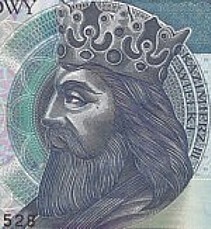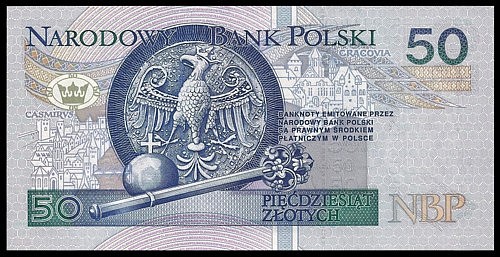POLAND
Casimer III

Casimer the Great (in Polish, Kazimierz Wielki) was born in the village of Kowal in north-central Poland to the first ruling dynasty of Poland, the Piast, in 1310. When he ascended the throne in 1333, Poland was a fragmented conglomeration of lands that his father was trying to assemble into one unified country. The neighboring rulers did not recognize Casimer’s claim to all the lands and saw him only as a minor ruler of the region around Krakow.
Casimer had inherited not only a loose confederation; he had to deal with economic woes and a populace that had suffered from warfare. The work of restoring the lands, people and economy were in the right hands, however. As Casimer was on his way to becoming Poland’s greatest king. In fact, he is the only Polish king to have been awarded the title of “Great” while living.
Casimer was able to remedy the issues plaguing his country by entering into treaties and negotiations with adjacent rulers, and regaining lands last in the previous wars. With the 1335 treaty of Trentschin, however, Casimer would have to relinquish claims to the territory of Selusia in South-western Poland. This was more beneficial to him because while he lost territory, the treaty also caused John of Luxembourg to relinquish his claims to the Polish crown. The treaty of Trentschin in effect helped secure the polish throne.
In October 1325, Casimir was married to Aldona, a Lithuanian princess. While the marriage was a political maneuver to strengthen Polish–Lithuanian relations, it did result in two daughters. Aldona died on May 26, 1339 and Casimir, who would later become known for his romantic eye for women, would remain a widower for two years.
In September 1341, Casimer married Adelaide from Hesse, a West German state. This marriage was a disastrous one, and Casimer and Adelaide soon began living apart. In 1356, their separation was enough for Casimer to decide that he would secretly marry his mistress, Christina. The secret wasn’t well kept, and due to pressures from the clergy claiming bigamy, and his own roving eye, Casimer declared a divorce from Christina in 1364. The next year he would marry Jadwiga, which would result in three more daughters.
Casimer would have five daughters, but no son to claim the throne. He did have three illegitimate sons with another mistress, Cudka, but as they were not officially his own, Casimer could not appoint one of them as his heir. Faced with having no male heir to the throne, Casimer named his nephew, Louis I of Hungary, to be his successor. Casimer’s sister Elizabeth would wind up with much of the rule herself.
Casimer took aim at improving the army and updating the laws of the country. In 1347 he addressed the Polish parliament in a southern village called Wislica, where he presented his reformation of the legal system. The treaties and negotiations that Casimer brokered began to pay off for the Poland. The people’s lives began to prosper once again, and immigrants were starting to flock to Polish cities. Trade routes going through Poland began to flourish, and several new castles were built. In Krakow, an early university was built in 1364, called the Krakow Academy. Renamed the Jagiellonian University in 1817, it was the second university in Central Europe. The influx of immigrants was from all over Europe, and included a variety of religions and ethnicities.
In an early move towards religious tolerance, Casimer created several laws to protect the Jews. At the time Christian zealots would often kidnap Jewish children and force them into a Christian baptism in order to ‘save’ them. Casimer declared that persons convicted of such kidnappings would be condemned to death. He also created laws to protect the Jewish cemeteries from vandalism. As a result of these and other protections guaranteed by Casimer, a large number of Jewish peoples began to immigrate to Poland, and many Jews can trace their heritage back to Poland in these times.
1364 was a busy year for Casimer. It was then that he also hosted the Congress of Krakow, a gathering of European kings to discuss diplomatic deals concerning a threat from the Turks. This was a great show for Casimer, as he was able to show off Poland’s newly regained status.
When Casimer died in 1370, Poland was once again a great country. It has often been said that he had inherited a kingdom of wood, and left it built of stone.

